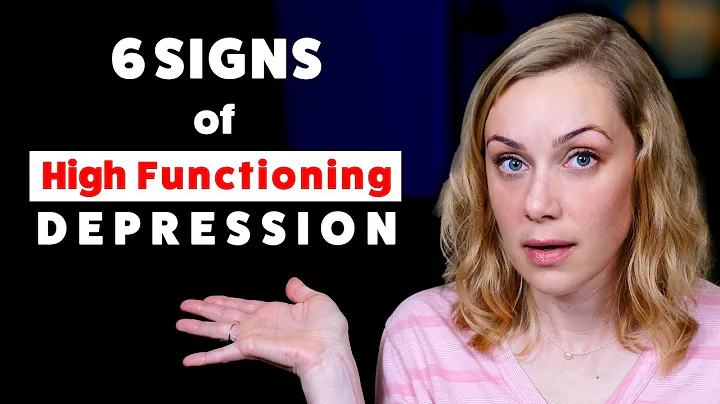
Psychologist A.S.Lochins once conducted an experiment:
He used two completely fabricated stories as experimental materials to describe the life fragments of a student named James. The two stories present two completely opposite personalities - Story A presents the passionate and extroverted James, and Story B depicts a cold and introverted person. The two stories are as follows:
Story A: James walked out of the house to buy stationery, and he and his two friends walked on the sunny road, basking in the sun. Then James walked into a stationery store, which was packed with people. While waiting for the clerk's attention to him, he chatted with his acquaintances. While he was buying stationery and walking out, he met a friend. He greeted his friend, then said goodbye to him and walked to school. On the way, he met another girl he had just met the night before yesterday. The two chatted for a few words and said goodbye to each other.
Story B: After school, James left the classroom alone and walked out of the school gate. He was walking home. The sun was very dazzling on the road. He walked on the shade. He saw that the beautiful girl he met the night before yesterday. James crossed the street and entered a restaurant filled with students. He noticed a few familiar faces there. James waited quietly until he caught the attention of the counter waiter and bought the drink. He sat in a chair beside the wall and drank the drink, and after that, he went home.
Lochins arranged these two stories and presented them to four groups of subjects with the same number of people: the first group looked at A first and then B, the second group looked at B first and then A, the third group only looked at A, and the fourth group only looked at B. After reading it, they asked them to comment on James.
78% of the first group of subjects believed that James was a more enthusiastic and extroverted person; only 18% of the second group of subjects believed that James was an extrovert; 95% of the third group of subjects believed that James was an extrovert; only 3% of the fourth group of subjects believed that James was an extrovert.
The same two stories, just by simply changing the order, can make people form completely different evaluations, because we will always have a deeper impression of the information we first receive, and this impression will largely influence our judgment - this is the "first cause effect", which is what we often call "first impression".
1, the cause of the "primary effect"
There seems to be no clear neurobiological theoretical research on the cause of the "primary effect"; if we analyze it from a cognitive perspective, there are two more mainstream explanations:
The first explanation believes that the first information received constitutes the memory diagram in our brain, and the subsequent information is only integrated into this memory diagram, which is equivalent to being assimilated by it, and naturally, it inevitably has relevant traces and colors of the original information.
For example, if you are anxious to build a house now, I will give you a bunch of wood and nails first, and you will use them to build a wooden house; then I will give you some steel bars, bricks and cement, and you will usually only use them to build some ancillary facilities - such as warehouses, fireplaces, chimneys, etc. The overall house is still a wooden structure.
But if I give you steel bars, bricks and cement first, and then wood and nails, you will build a house with brick-concrete structure , and the wood will be used to create attached settings - such as tables, chairs, benches, garden fences, etc.
sets of interpersonal communication, after seeing someone for the first time, we need to quickly establish an impression and judgment of him (just as if we are eager to build a house), and the materials used are the information (building materials) that he first presents to us; the specific impression is (what kind of house is built) depends on the content bias of the information (what kind of building materials are obtained first).
Another explanation is based on the attention mechanism.Some scholars believe that the information obtained first will receive more attention because there is no other interference, and will be extracted and processed more carefully; the information obtained later is easily overlooked and the processing is more rough.
Or use building a house as an example: you finally built a house with wood, and you can almost live in it, and your strength has been spent. I will give you a bunch of other building materials, so you are too lazy to move. At most, you can fool around and put something down.
2, the influence of "primary effect"
Its biggest impact on us is undoubtedly interpersonal communication. Especially in some situations where overall judgment is required in a short period of time, it is almost a decisive factor.
For example, for interviews, interviewers often only have only a few dozen minutes or even a few minutes to contact the interviewer. This performance in a short period of time is almost the only criterion for interviewers to judge. At this time, the effect of the "primary effect" is greatly amplified, and the time range covered by its "primary effect" is also greatly compressed - your ending may be destined in a few seconds of the interview.
I have participated in civil servant interview training and have always believed that the so-called " structured interview " should attach great importance to the answers given by the interviewer to the corresponding questions. After all, these questions are carefully designed and used to assess related abilities.
After working for many years, when I talked to an interviewer who was interviewing a civil servant, I found that I was outrageously wrong at the beginning. Compared with the answer, they valued the interviewer's words and deeds more, especially the process from entering the door to sitting down:
"Some people come in and shivered, and they were timid and afraid of things and had no responsibility at first glance; Some people come in and see the rules, but they call like customer service. The training traces are too heavy, and they don’t have the ability to work independently. Those who don’t say hello to the door, sit or sit or sit or sit or sit or sit or sit or sit. Can you expect them to have awe of work? These are basically impossible. "
This only accounts for less than 1% of the time in the entire interview process, but almost determines 99% of the results.
This influence is a double-edged sword:
On the one hand, it may bring us some "unfair" judgments; but on the other hand, we may also be able to use it to win more opportunities for ourselves.
3. Can the "primary effect" be reversed?
Before talking about this problem, we need to understand another concept - " proximal effect ".
and the "primary effect", the "proximal effect" means that some fresher information that is closer to the current time will have a greater impact. For example, "A scholar should look at each other with admiration after three days of separation", which refers to the "close cause effect". There is a certain conversion relationship between the "primary effect" and the "proximal effect". The relevant experimental results of the conversion of proximal to proximal cause are still questionable (the conclusion cannot be repeatedly observed in different experiments), but the conversion of proximal cause to proximal cause has been more confirmed.
In 2002, "Psychological Science" published an experimental study conducted by Department of Psychological and Behavioral Sciences of Zhejiang University. The general content was to allow multiple groups of different subjects to recall the text that appeared in different orders and at different time intervals.
study found that if the subjects were asked to recall immediately after the text was presented, the accuracy showed that the "primary effect" was stronger than the "proximal effect" - the first text appeared the highest accuracy, followed by the last text;
But if the subjects were not asked to recall immediately after the text was presented, instead, waiting for 10 seconds to recall, the accuracy showed the opposite rule - the last text appeared the highest accuracy, followed by the first text.
Even if the subject is clearly required to recall one by one from beginning to end, after waiting for 10 seconds, the last text with the highest accuracy rate is still the last text.The experiment of
shows that over time, the impact of the "primary effect" can be broken, and it will gradually be replaced by updated and closer information; and, from the actual life experience, it can be found that the more, more sustained and more contrasted these new information can be used, the more it can replace the impact of the "primary effect".
For example, Zhai Tianlin and Zhao Lixin were both actors with good reputations, and they could give people the first impression of being "reliable" in terms of conversation, acting skills and appearance; but later, one with the character of a top student was "not ignorant", and the other with the title of "old actor" openly cleanses the invaders. These "proximal causes" that are impactful and contrasting directly subvert the first impression and discredit their reputation.
We can use some efforts to reverse the bad first impression, and will also destroy the good first impression due to some performance.
"Primary Effect" exists in all aspects of our lives, especially in interpersonal communication. We will be confused by the deliberate disguise of others, and may have used it to disguise ourselves.
It is both an opportunity and a risk. But if the situation allows, "not sure, look again" may be a better strategy.
Author: Lin Cong
Source: Internet
First release: Yidianling Psychology
Focus on psychological growth, love you warmly and forcefully











